Plants that shine in the winter garden…
After a few days and nights at 21 degrees, my Central Texas garden took a serious hit last month. But, we were due. Last year it didn’t freeze at all in my garden, so you can imagine how huge some of our perennials were by the end of 8 seasons of growth!
Our typical winter includes a few freezes, but the temperature dips to around freezing for a few hours and then climbs right back up during the day. Not so this year.
I’m leaving the last of the fall leaves in the beds to help protect the plants and provide habitat for bees, so you are going to see the good, the bad and the very ugly. It’s an all-exposed tour. Viewer discretion is advised — you may need to avert your eyes in some parts!
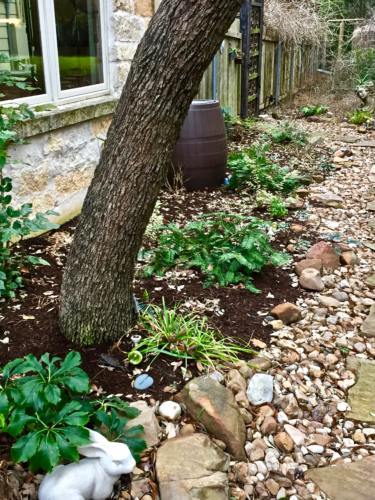
While the ferns and the bletilla striata are dormant, he dry creek pathway is lined with hellebores, a few sedges, a few cephalotaxus prostrata. Mostly out of view on the left are two leatherleaf mahonias.
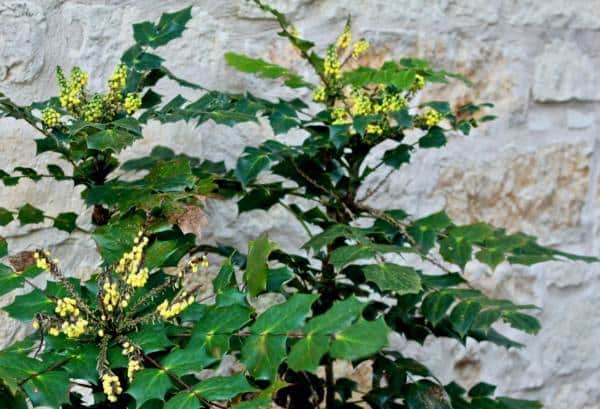
The brilliant yellow berries on the mahonias add great color to the garden on gray winter days.
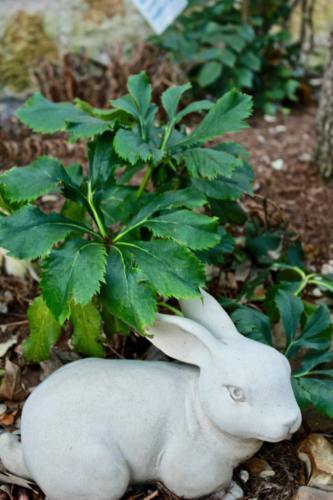
In drought years, the foliage of the hellebores disappears in the summer garden, and reappears in fall and through the spring. I have a collection of different varieties. Below is a winter photo of my favorite – ‘Phoebe,’ from several years ago when we had snow.
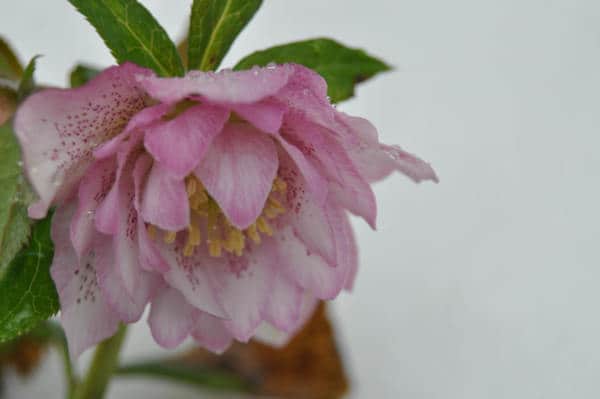
Isn’t that a gorgeous bloom?
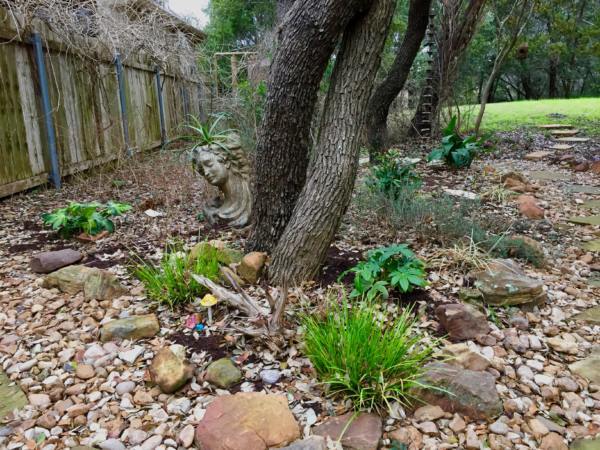
Where the path diverges, a few more sedges and a standard Japanese aralia and a variegated Japanese aralia add a pop of green. The squid agave in the Artemis statue head was unfazed by the cold. Farther back, a small clump of cast iron plant draws the eye.
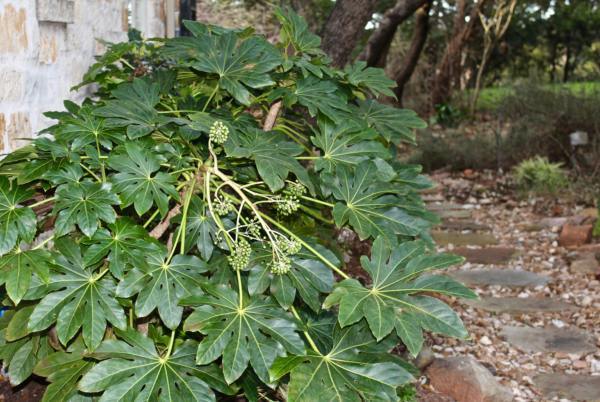
I’ve had this aralia for a long time. It’s been through drought and covered in ice in bad winters, but nothing seems to slow it down.
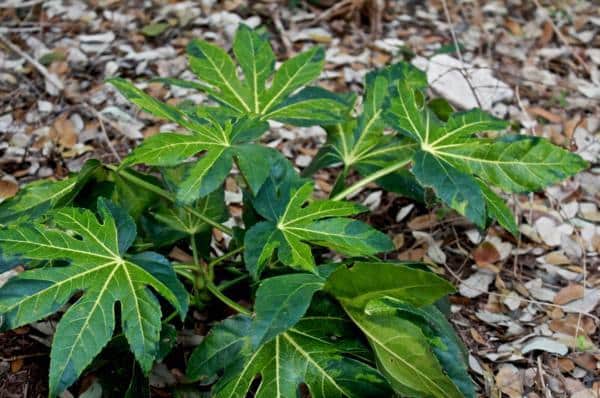
This fall I planted another aralia variety – a variegated one. I was a little concerned that it might be more tender than the other, but it has held up beautifully.
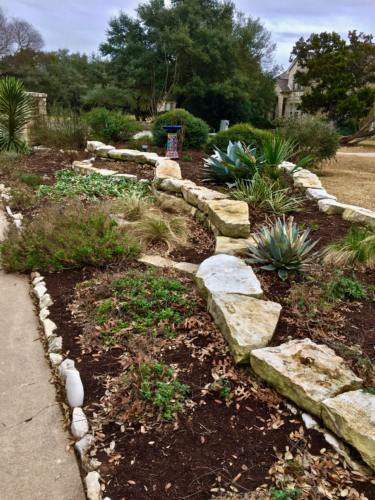
In the front bed, the one we jokingly call the hideous bed, natives and other well-adapted plants are hanging on. Catmint, skullcap, Mexican feather grass, a whale’s tongue agave, salvias, Mexican sabal palms and a Spanish dagger yucca are all going strong.
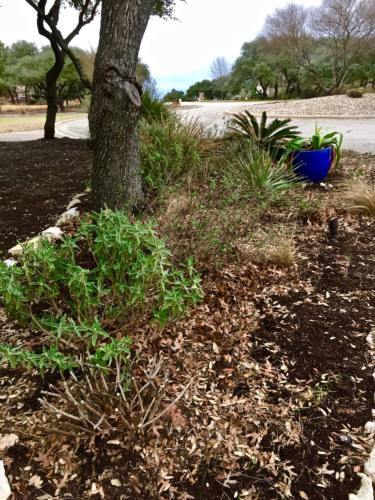
Across the driveway, more xeric plants are showing off, like the Jerusalem sage, a Texas sotol, a sago palm, and some salvia Greggii.
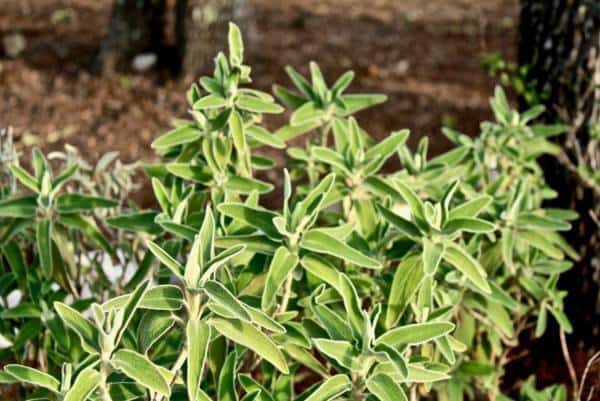
You’ll find Jerusalem sage in many parts of my garden. It’s unusual color makes an intriguing contrast — and its fuzzy leaves make it completely deer-resistant.
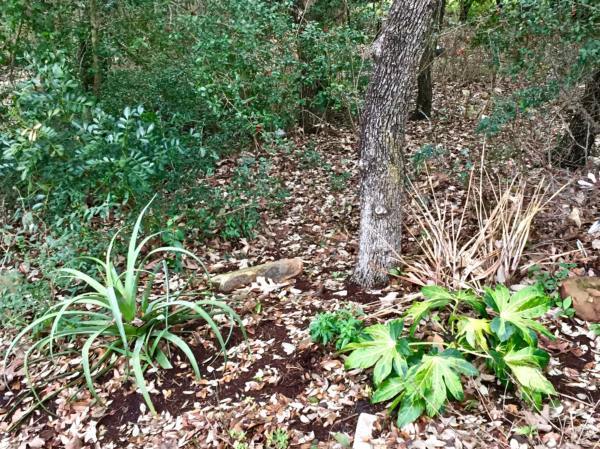
Another variegated fatsia Japonica is keeping a squid agave and a mountain Laurel company. Sadly, the dianella in the background looks like it’s toast. I’m hopping it was established enough to come back from the roots quickly, once spring arrives.
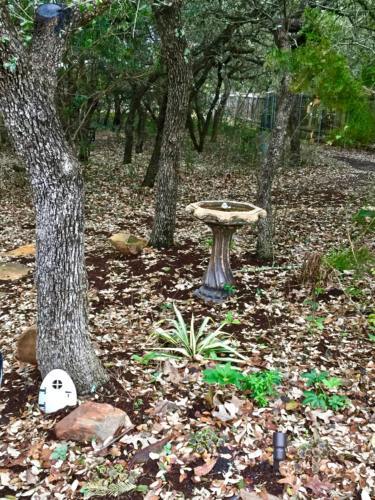
A bright edge yucca, several more hellebores and a few almost hidden heucherellas are peaking out of the carpet of leaves.
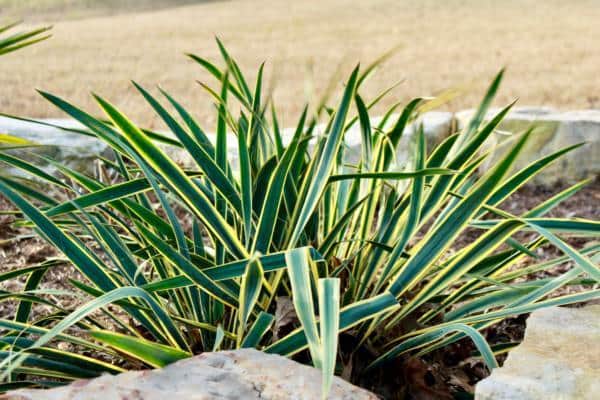
Bright edge definitely earns its name!
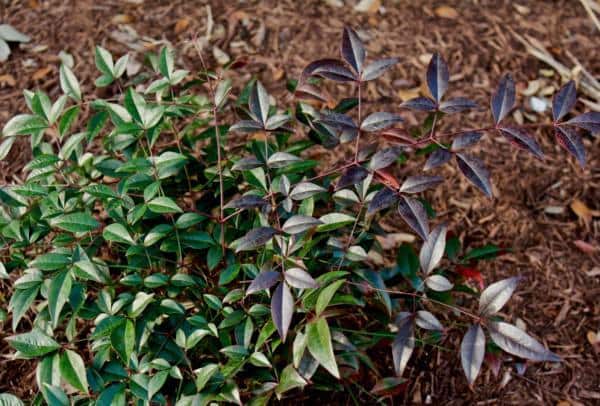
I added a few new compact shrubs to the front beds last year. These ‘Flirt’ nandinas make a beautiful middle-layer, evergreen addition and their added burgundy tips coordinate well with the larger loropetalum.
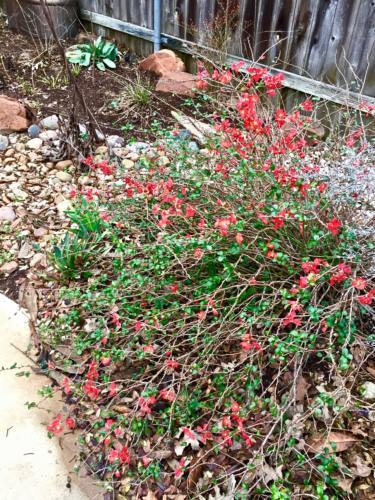
One of my favorite plants for winter/spring interest is Japanese quince. It’s sculptural and almost-bare branches are sporting a flush of gorgeous, salmony-pink blooms.
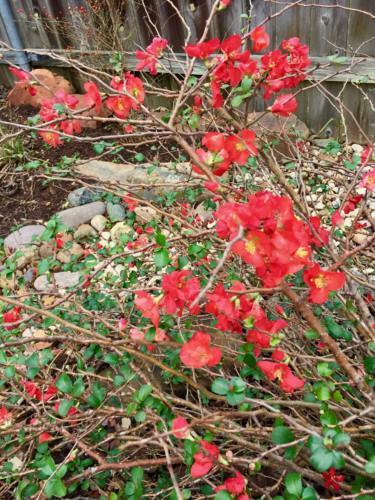
The butterflies are so thankful that at least something is blooming out there!
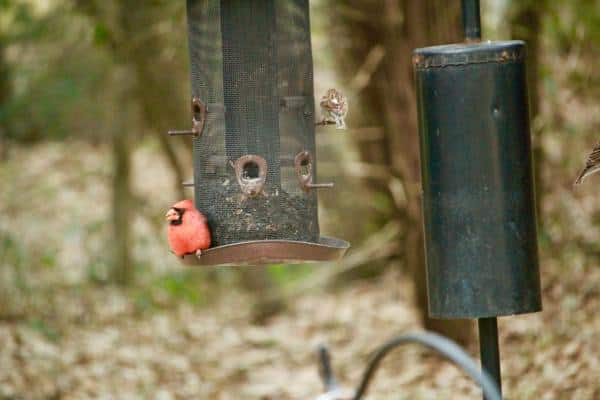
And no matter what the plants are doing in the garden, we can always count on at least a few cardinals on our many feeders in the wooded area.
While these aren’t the prettiest pictures of my garden, they allow me to see the true bones of the landscape, and evaluate the beds to determine what projects I’ll want to undertake in the spring.

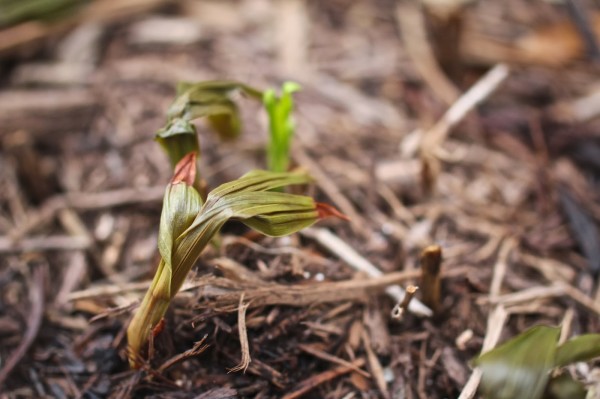 Unlike warmer winters, when many of the perennials in our gardens survived and even bloomed through the season, this year has been a cruel test of our gardens.
Unlike warmer winters, when many of the perennials in our gardens survived and even bloomed through the season, this year has been a cruel test of our gardens.